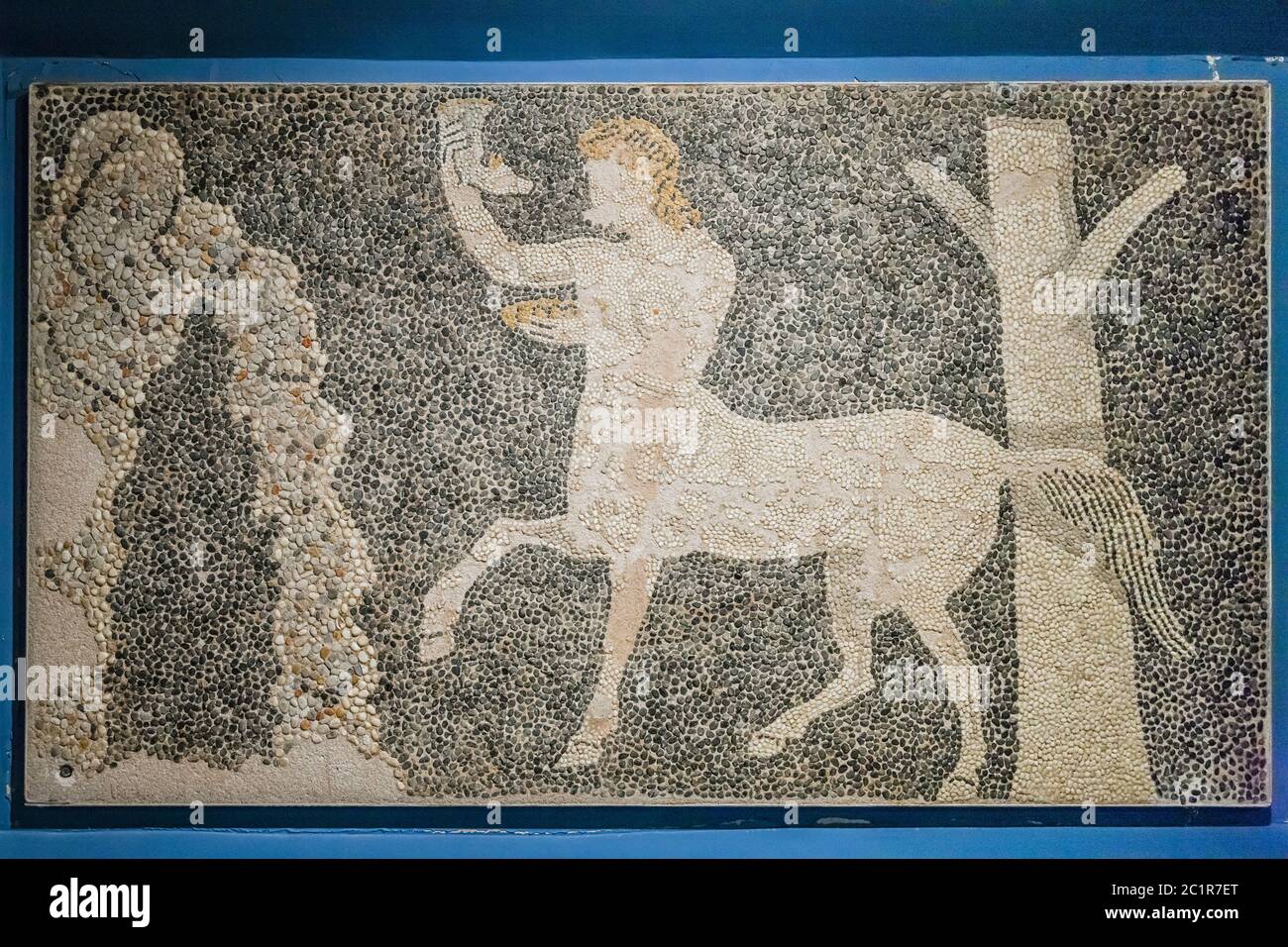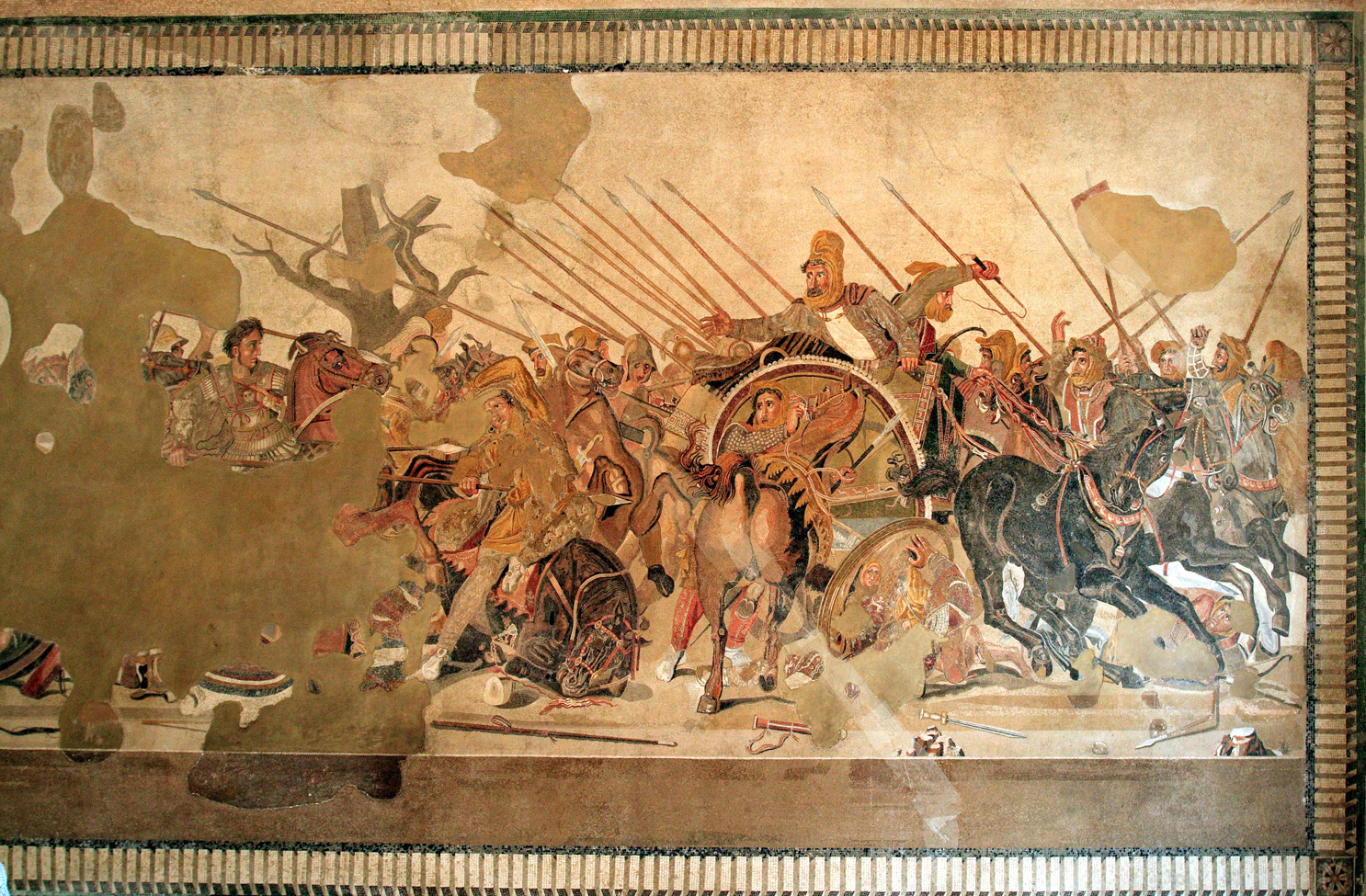South side of the parthenon athens circa 440 bc wood engraving 2nd half 19th century centaurs centaur centaurs lapiths greek mythology legend saga legends sagas classical sculpture fine.
Floor mosaic battle of the lapiths and centaurs.
Battle of the lapiths and centaurs roman 3rd 4th century c e.
Detail of eurytion hippodameia and a centaur from a mosaic depicting the fight between the lapiths and centaurs at the wedding feast of king pirithous.
The centaurs as both being half human and being in a state of drunkenness are clearly set off from the lapiths.
The ideas of civilization over barbarism and rational thought over chaos.
In a sculptural context centaurs are difficult to misidentify with their human torsos perched on top of equine withers.
This centaurs floor mosaic captures a centaur attacking its prey at hadrian s villa in tivoli italy.
The complex is located in the eastern region of rome.
Pericles iktinos phidias kallikrates.
Female centaurs are seldom mentioned in ancient literature although they do occasionally appear in ancient greek paintings and roman era mosaics and reliefs.
Who was the artist responsible for the sculptural program decorating the parthenon.
In the ensuing battle the lapiths overcome the centaurs.
Such legends include the battle of the gods and the giants the amazons and the greeks and the sack of troy.
The leader of the lapiths pirithous invited the half human half horse centaurs to his wedding to a woman named hippodamia.
War of lapiths and centaurs.
When peirithoüs king of the lapiths invited the centaurs to his wedding the centaurs who became drunk tried to abduct the bride hippodameia and other lapith women.
Centauress apulian red figure vase fragment c4th b c museum of fine arts boston the kentaurides centaurides were the female members of the kentauroi centaur tribe creatures with the double formed bodies of horses and men.
One of them eurytus full of liquor tried to carry off the bride and soon a battle raged in which drinking vessels table legs antlers in fact anything to hand.
The mosaic represents.
The mosaic dates back to 120 130ad and was created by numerous natural stones that varied in color.
Floor mosaic representing a centaur from the acropolis of rhodes.
However the most identifiable of all these battles is undoubtedly the epic battle of the lapiths and the centaurs.
The mythical lapiths lived in thessaly a region in northern greece.
The lapiths a peace loving people of thessaly were celebrating the wedding of their king pirithous to hippodamia.
Colored stone and glass set in mortar.
The battle of the lapiths and the centaurs the contest between athena and poseido.
The artwork remains as a floor decoration in the dining room of the main palace within emperor hadrian s extensive villa complex.
The cartel says.
The war of the lapiths and the centaurs was one of the favourite subjects in greek mythology particularly in art and literature.
On the right a centaur brandishing a tree branch battles a lapith warrior not shown.
The centaur eurytion on the left seizes the bride hippodameia by the waist.
























